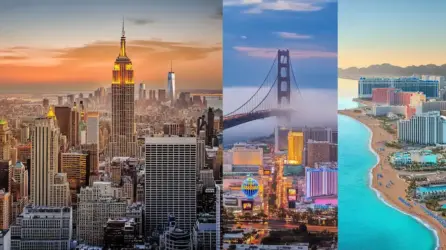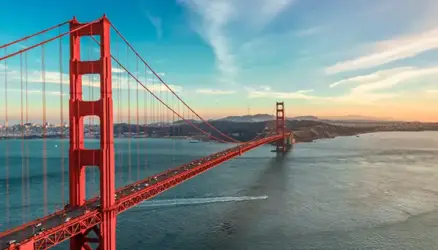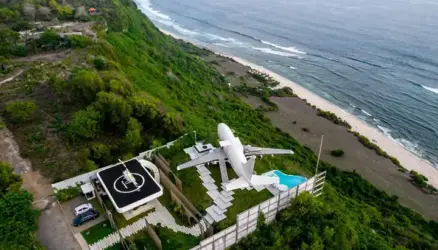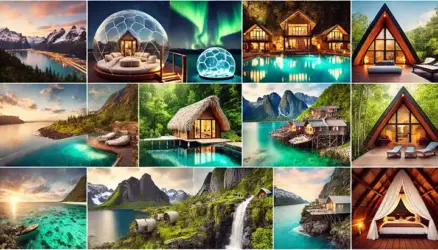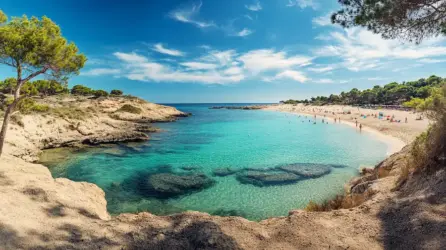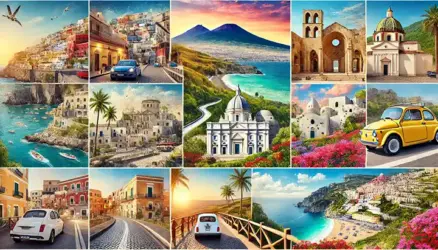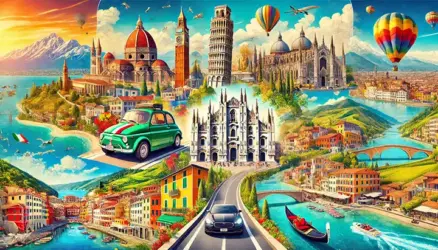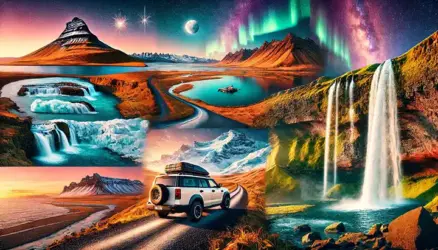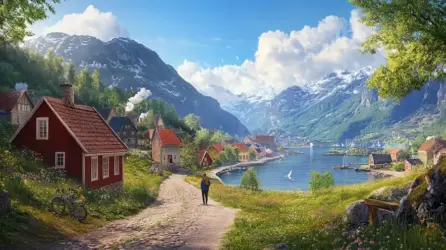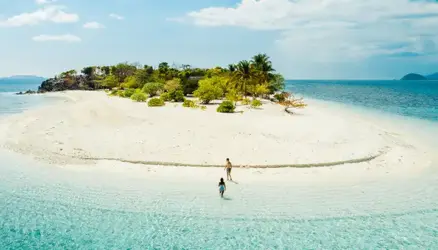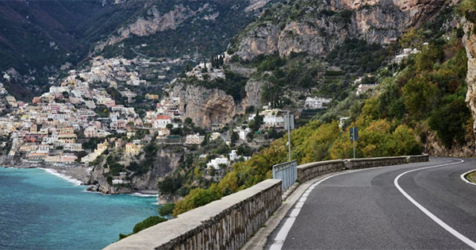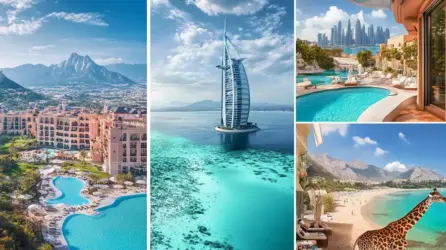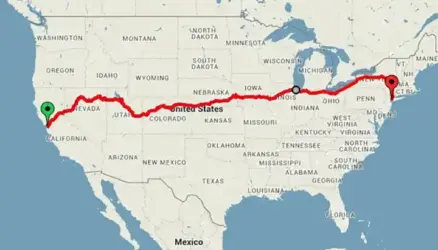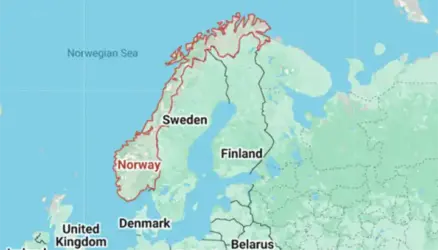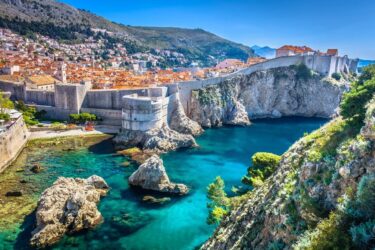Breathtaking locations on Earth that seem to be from another planet

For centuries, humans have fantasized about traveling to other worlds. With the upcoming crewed Artemis 2 mission around the moon, we’ll be returning to Earth’s nearest neighbor — and NASA hopes to use the Artemis program as a stepping stone toward Mars, where the agency hopes to send astronauts in the late 2030s or early 2040s.
Fortunately for most of us, Earth has some truly breathtaking places to visit that will make you feel as if you’ve stepped onto another planet. You don’t need a spacecraft or millions of dollars to have an out-of-this-world experience; all you need is a passport and a plane ticket.
Discover some of the most bizarre places on Earth, from glaciers to deserts, volcanoes to caves.
#1 Wadi Rum, Jordan
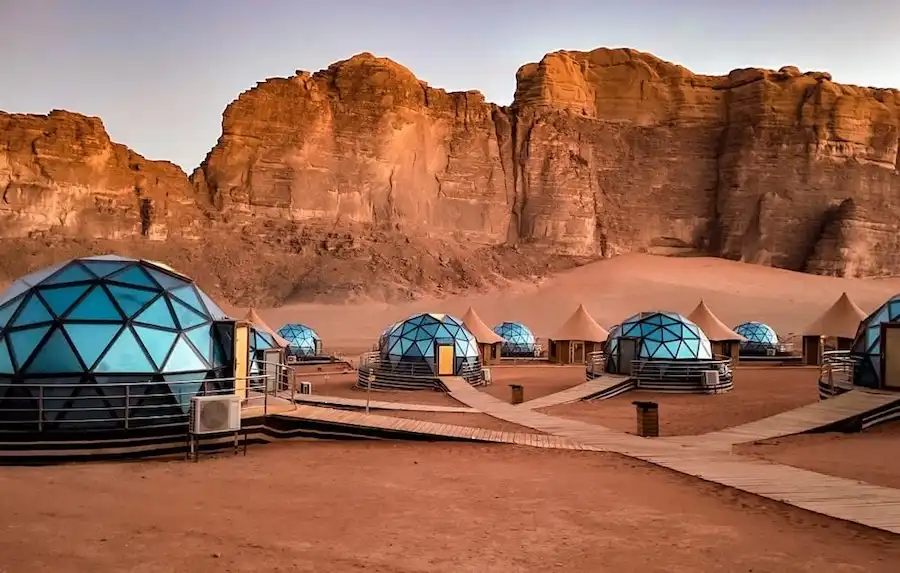
According to the travel website WadiRum.jo, Wadi Rum is a desert covering 277 square miles (717 square kilometers) in South Jordan (opens in new tab). You could be forgiven for thinking you’ve just landed on Mars while exploring the dramatic wilderness. Wadi Rum is a wondrous place with wide sandy valleys over a mile (1700 meters) high, smooth red dunes, and mesmerizing rock formations.
During the Arab Revolt against the Ottoman Turks in the early twentieth century, British liaison officer Thomas Edward Lawrence served with rebel forces. According to the travel website Wadi Rum Nomads, he described Wadi Rum as “vast, echoing, and God-like.”
Lawrence wrote a book called “Seven Pillars of Wisdom” about the time period, which was later adapted into the 1962 film “Lawrence of Arabia.” According to IMDB, several scenes from the film were shot in Wadi Rum.
#2 Salar de Uyuni Salt Flats, Bolivia

According to the European Space Agency, the Salar de Uyuni in Bolivia is the world’s largest salt flat, spanning over 3,800 square miles (10,000 square kilometers). The massive salt flat is so massive that it can be seen from space.
The salt flat’s center can reach depths of 32 feet (10 meters). Salar de Uyuni contains over 10 billion tons of salt, according to the travel website Salardeuyuni.com(opens in new tab). Surprisingly, 70 percent of the world’s lithium reserves are also discovered beneath the massive salt flat.
These captivating salt flats in Bolivia’s surreal Altiplano are a must-see for those looking for something out of the ordinary.
#3 Kilauea Volcano, Hawaii

On the Big Island of Hawaii’s south coast, lava from the Kilauea volcano spews into the Pacific Ocean, creating dramatic scenes along the rugged coastline.
According to the travel website Go Hawaii, Kilauea is one of the world’s most active volcanoes. It is located in the Hawaii Volcanoes National Park, about 45 miles (72 kilometers) southwest of Hilo.
Kilauea has been erupting continuously since 1983, according to the volcano tourism website Volcano Discovery(opens in new tab). During that time, the volcano’s lava flows covered more than 38 square miles (100 square kilometers) and destroyed nearly 200 homes.
#4 Rainbow Mountain, Peru
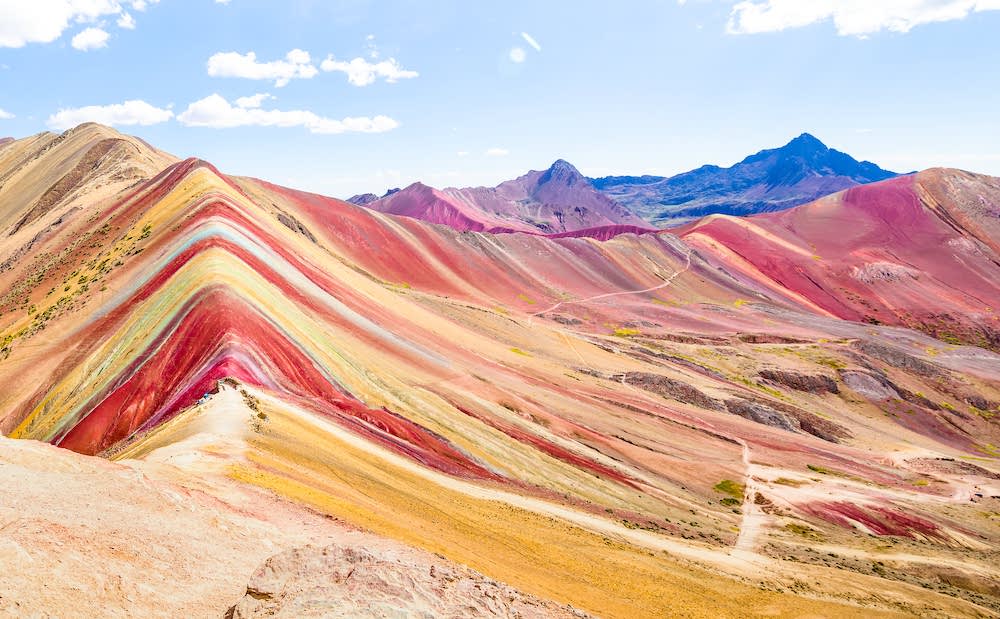
According to the Rainbow Mountain tourism website, Rainbow Mountain is located in Peru’s Andes Mountains, approximately 17,000 feet (5,200 m) above sea level. The streaked mountain is well-known for its technicolor appearance, which is caused by various mineral sediments.
This rainbow jewel of the Andes was previously unknown, hidden beneath a blanket of snow. The hidden gem was revealed as the snow melted, and the area now attracts hundreds of visitors every day.
According to the official tourism website Rainbow Mountain Peru, Rainbow Mountain is also known as Vinicunca. Vinicunca is a Quechua word that means “colored mountain” in the indigenous language of Peru.
#5 Lençóis Maranhenses National Park, Brazil

The large areas of white dunes that sweep across the otherworldly landscape of Lençois Maranhenses National Park are breathtaking. According to the travel website Lonely Planet, rainwater fills the crystal-clear pools, which are offset by striking white dunes, from May to September.
The enchanting dunescape stretches for 43 miles (70 kilometers) along the coast and 30 miles (50 kilometers) inland. Lençois translates as “bedsheets” in Portuguese and refers to the landscape’s rolling white dunes.
According to Lonely Planet, the best months to visit the national park are June, July, and August, when the lagoons are at their best.
#6 Waitomo Glowworm Caves, New Zealand

If you prefer a different kind of light show to a night under the stars, New Zealand’s famous glowworm caves might be just the thing.
The Waitomo Caves, according to New Zealand.com, have some of the best glowworm viewing in the country. Explore the Waitomo Caves by boat, kayak, or on foot and marvel at the thousands of glowworms that call these caves home. The unusual environment appears to be something out of a science fiction film, with strange creatures illuminating the path like a star-studded sky.
According to the Natural History Museum in London, glowworms produce light through a chemical reaction known as bioluminescence.
#7 Grand Prismatic Spring, Yellowstone National Park
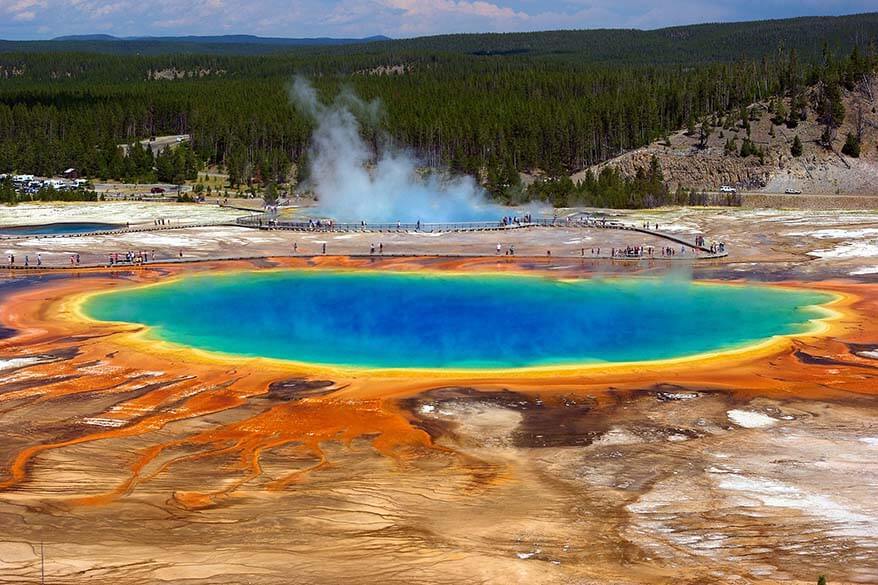
According to adventure publisher Outside, the Grand Prismatic Spring is the most photographed thermal feature in Yellowstone National Park.
The ring of vivid colors measures 200 to 300 feet (60 to 90 meters) in diameter and 121 feet (36 meters) deep, according to the US National Park Service — it’s no surprise that this striking spring is popular with photographers and tourists alike.
The superheated spring is also a popular destination for thermophiles, which are microscopic organisms that thrive in hot environments. (“Thermo” refers to heat, and “phile” refers to a lover.) The thermophiles that live in the hottest water are colorless or yellow, whereas the thermophiles that live in the cooler waters around the spring are orange, brown, and green.
#8 Vatnajökull Glacier, Iceland
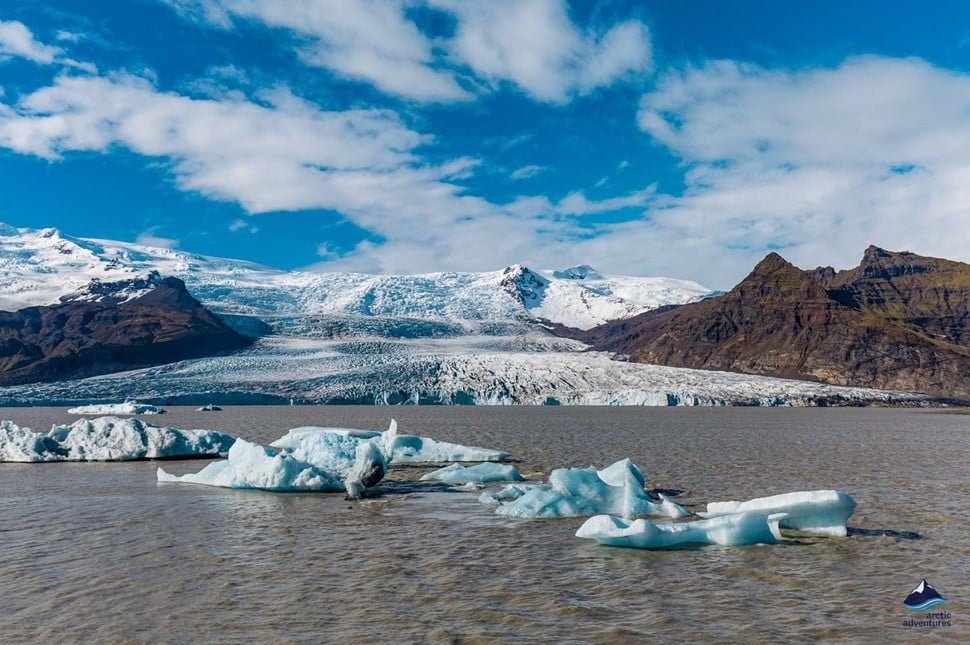
The Vatnajökull glacier is Europe’s second largest glacier. According to the travel website Guide to Iceland, it covers 3,130 square miles (8,100 square kilometers) or 8% of Iceland’s landmass.
The massive glacier is over 3,000 feet (900 meters) deep in some places and hides several active volcanoes beneath its surface, the most famous of which are Grmsvötn, Raefajökull, and Bárarbunga. Geologists believe that volcanic eruptions from this region are overdue, and that significant activity could occur within the next 50 years.
Vatnajökull also has enchanting ice caves, such as the one shown above, and glacier and ice cave tours are available during the winter months.
The glacier is shrinking year by year as global temperatures rise; its thickness has decreased by about 3 feet (0.9 m) per year on average over the last 15 years. For the past 15 years, the average annual growth rate has been around 3 feet (0.9 m).
#9 Sossusvlei, Namib Desert
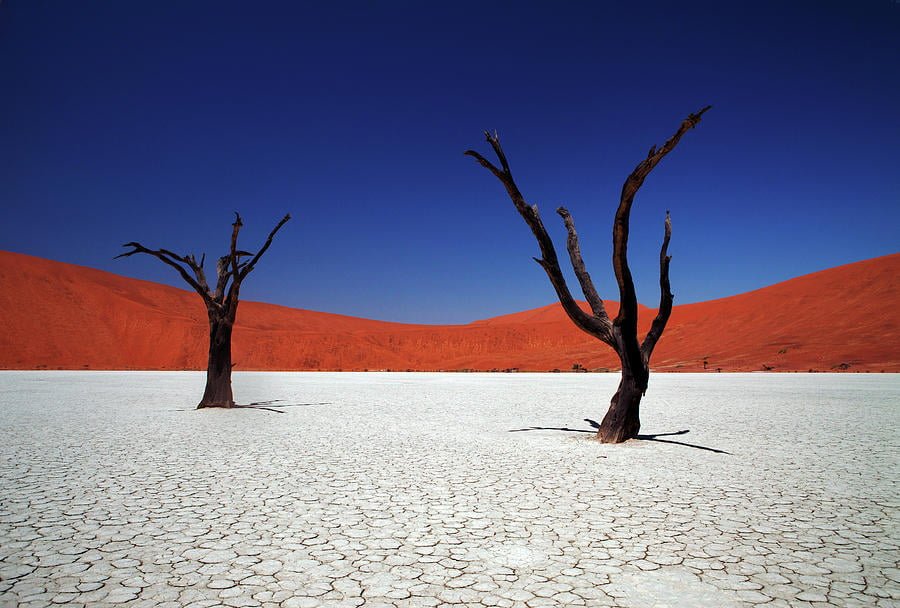
According to the travel website Sossusvlei, the towering red dunes in Sossusvlei are some of the world’s tallest, reaching nearly 1,300 feet (400 m). It’s no surprise that they’re one of Namibia’s most popular attractions.
The Martian-like environment is located in Africa’s largest conservation area, Namib-Naukluft National Park. Sossusvlei means “dead end” in Afrikaans and refers to the dunes that prevent the Tsauchab River from flowing any further.
The wind sculpted these famous red dunes over millions of years. The dune-forming dust comes from the Orange River, South Africa’s longest river. The dust is carried northward by the Benguela current in the Atlantic Ocean. It then washes up on the beach, is carried by the wind, and is deposited inland.
#10 Pamukkale, Turkey

Pamukkale, Turkey’s “Cotton Castle,” is a tranquil landscape dotted with mineral pools and surrounded by white “cotton-like” shelves and ridges.
A spring with a high concentration of calcium bicarbonate spilled over the edge of a cliff and cascaded down the side, creating the unique landscape. According to the Republic of Turkey Ministry of Culture and Tourism, the water leaves behind the white calcium deposits we see today.
Tourists from all over flock to Pamukkale to relax in the calm waters and the numerous spas that have sprouted up throughout the region.
#11 Lake Hillier, Australia

Lake Hillier, located on Middle Island in Western Australia, appears to be from another planet. The striking contrast between the pink lake, the dark blue waters of the Indian Ocean, and the lush green forest is breathtaking.
Scientists aren’t sure how the lake gets its rosy pink hue, according to the travel website Hiller Lake. The most likely suspect is the lake’s Dunaliella salina microalgae, which produces carotenoids, a red pigment. However, halophilic “salt-loving” bacteria in salt crusts could also play a role. It has also been proposed that the lake’s color is being affected by a reaction between salt and sodium bicarbonate.
The mysterious salmon-pink lake is about 2000 feet (600 meters) long and 820 feet (250 meters) wide, and it is best seen from the air.
#12 Kawah Ijen Volcano, East Java, Indonesia

The electric-blue rivers ejected by the Kawah Ijen volcano in eastern Java appear to be from another planet.
Contrary to popular belief, the lava itself is not blue. The vibrant color is caused by volcanic sulfur emissions. The volcano, according to Geology.com, emits sulfurous gases that ignite when they come into contact with Earth’s oxygen-rich atmosphere and burn with a rich blue flame. The infamous blue rivers that illuminate the volcanic landscape at night are formed when sulfurous gas condenses.
According to Smithsonian Magazine, the eerie blue glow is only visible at night because the flames, not the lava, are blue. During the day, it appears to be any other volcano.

